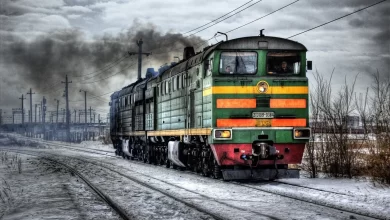Copper is a reddish-brown metal that humans have used for thousands of years. It is one of the most important metals in industry, with a wide range of applications due to its excellent conductivity, malleability, and resistance to corrosion. Copper is commonly used in electrical wiring and circuitry as it is a good conductor of electricity. It is also widely used in plumbing, roofing materials, production of coins, jewellery, and other decorative objects. Copper is also a good conductor of heat with high efficiency and high heat resistance. Copper is also highly malleable, meaning it can be easily shaped and formed into various shapes and sizes without losing its strength. Copper is often combined with other metals to create alloys with different properties, such as bronze and brass. Copper is widely available and is mined in many countries around the world. Due to its versatility and importance in modern industry, copper plays a critical role in the global economy and will continue to be essential material for years to come.
- It is a reddish-brown metal that was first used in coins and ornaments in 8000 B.C. it is believed that copper tools helped civilizations to emerge from Stone Age.
- The name “copper” comes from the Latin word “cuprum”, which means “from the island of Cyprus”, where copper was mined in ancient times.
- The chemical symbol of copper is Cu, and the atomic number is 29.
- Copper is an essential mineral for the human body, and it is necessary for the proper function of many enzymes and metabolic processes. Copper is used by our body to perform a variety of important functions, including the formation of energy, connective tissues, and blood vessels. Copper also aids in the maintenance of the nervous and immune systems, as well as the activation of genes.
- Copper is the world’s third most commonly used metal, after iron and aluminium.
- Copper has antimicrobial properties and is often used in hospitals to prevent the spread of infection. Bacteria, yeasts, and viruses are killed quickly on metallic copper surfaces, and the term “contact killing” has been coined to describe this process.
- The Statue of Liberty in New York City is made of copper, and the metal has oxidized over time to give the statue its distinctive green colour. About 100 tons of copper was used in the construction of this American pride.
- Copper is widely available and is mined in many countries around the world, including Chile, Australia, Peru, and the United States.
- The top 5 countries that have the highest copper reserves are as follows-:
Chile: 200 million Mega Ton
Australia: 93 million MT
Peru: 77 million M.T.
Russia: 62 million M.T.
Mexico: 53 million M.T. - Recycling copper is highly efficient, and up to 100% of copper scrap is reused in new products, making it a sustainable and environmentally-friendly material.
- Copper is a very ductile metal, meaning it can be easily drawn into thin wires without breaking. In fact, a single copper wire just 0.1 mm in diameter can support over 3 kg of weight.
- The largest copper-producing country in the world is Chile, followed by Peru, China, and the United States. The production of these four countries accounts for 60% of total global production in the year 2021.
- Copper has been used for artistic purposes for thousands of years, with examples of copper artwork dating back to ancient Egypt, Mesopotamia and India.
- Copper is an important nutrient for plants and is often added to fertilizers to improve crop yields.
- The melting point of copper is 1,085 degrees Celsius (1,985 degrees Fahrenheit). In contrast, the boiling point of the metal is around 2,562 °C.
- Copper is a non-magnetic metal, which makes it a useful metal in applications where magnetic interference is a concern.
- Copper is often used in building construction due to its durability, resistance to corrosion, and aesthetic appeal. Copper is often used in roofing systems, flashings and copings, rain gutters and downspouts, building expansion joints, wall cladding, domes, spires, vaults, and other architectural components.
- The use of copper as a roofing material dates back to ancient times, and copper roofs are still used today due to their durability and resistance to weathering.
- Copper is one of the few metals that occurs naturally in its pure form, without the need for smelting or refining.
- The electrical conductivity of copper is the highest of all non-precious metals and second only to silver in overall conductivity. The electric conductivity of copper is 58 MS/m at 20 °C.
- Copper is used in the production of many musical instruments, including brass instruments, strings for guitars and other stringed instruments, and percussion instruments such as cymbals.
- Copper has been used for medicinal purposes since ancient times and is still used in some cultures to treat various ailments, such as arthritis and skin conditions.
- Copper is a soft metal with a Mohs hardness of 2.5 to 3, which means harder materials can easily scratch it.
- The copper industry is one of the most energy-intensive industries, with significant amounts of energy required to extract, refine, and transport copper.
- Copper is often alloyed with other metals to improve its strength and durability, such as in aircraft production, spacecraft components and even jewellery.
- The world’s largest float copper right now is owned by Collector’s Edge in Golden, Colorado. It weighs 26.6 tonnes (53,100 lbs). It was found in 1997 near Boston.
- Copper is an important trace mineral for animal nutrition and is commonly added to animal feed to ensure healthy growth and development.
- In 2021, the world used about 25.3 million metric tonnes of refined copper, with China being the largest consumer of copper. The country is also the biggest importer of this metal.






